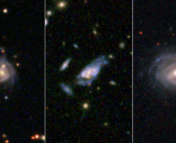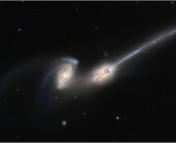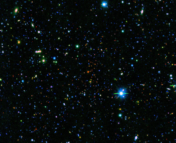Title: The two formation pathways of S0 galaxies
Authors: Simon Deeley, Michael J. Drinkwater, Sarah M. Sweet, Kenji Bekki, Warrick J. Couch, Duncan A. Forbes, Arianna Dolfi
First Author’s Institution: School of Mathematics and Physics, University of Queensland, Brisbane, Queensland 4072, Australia
Status: Accepted for publication in the Monthly Notices of the Royal Astronomical Society
What are S0 Galaxies?
Galaxies in the universe exist in many shapes and sizes. Three major groups exist, known as elliptical, spiral, and irregular galaxies. These galaxy types are historically joined in what is known as the “Hubble tuning fork” with subdivisions of the above types. Connecting the elliptical and spiral galaxies are the S0 galaxies (also called lenticular galaxies). Observationally, these galaxies retain a disk, much like spiral galaxies, but do not have significant star formation, much like elliptical galaxies.
S0 galaxies are very common in the local universe, particularly in dense environments like clusters. Despite their abundance, the way that these galaxies are formed is still a matter of debate in the literature. There are two major hypotheses. The first is stripping, where a blue spiral galaxy is stripped of its gas in a process known as ram-pressure stripping. The second is merging, where a spiral galaxy merges with a smaller companion and the gas is either unbound or quickly consumed in a burst of star formation. From recent studies of the properties of S0 galaxies, it appears unlikely that a single formation pathway can explain the observed diversity in kinematics and structure.
The Life and Times of S0 Galaxies
The authors of today’s paper aim to answer the question of S0 formation through simulations. They make use of the IllustrisTNG-100 simulation, which covers a range of masses from on the order of a molecular cloud (smaller than a single galaxy) to a Virgo-sized cluster (comprised of many galaxies). To confirm that their simulations are realistic, they compare the synthetic galaxy properties to real galaxies from the Sydney AAO Multi-object Integral-field Spectrograph (SAMI) Galaxy and Mass Assembly (GAMA) survey. To do this, they compared synthetic galaxy color-magnitude diagrams, kinematics maps, and S0 fractions between the observations and simulations. While some details in the galaxy properties are different between the simulations and data, the authors find that broad trends among galaxy classifications and rates are in good agreement. Using these results, the authors make a color cut of g-r = 0.6 (where g and r are photometric filters) to select S0 galaxies in addition to morphology cuts.
With their simulations, the authors are able to follow the evolutionary pathway of each S0 galaxy to understand its formation pathway. Figure 1 shows the complete history of each S0. Broadly, the S0 galaxies start off their lives as blue star-forming galaxies (on the right side of panels a and b in Figure 1). As they evolve, some undergo infall into a cluster and are stripped and others undergo large mergers. Finally, there is a small group that passively (i.e. without any interaction) becomes an S0 galaxy. Each galaxy eventually crosses the g-r = 0.6 boundary and transitions to a red S0 galaxy. In the right panel, we see that the S0 galaxies start off forming stars at a decent rate (~10 Msun/yr) and transition to a low star formation rate (<1 Msun/yr) once they have become an S0.
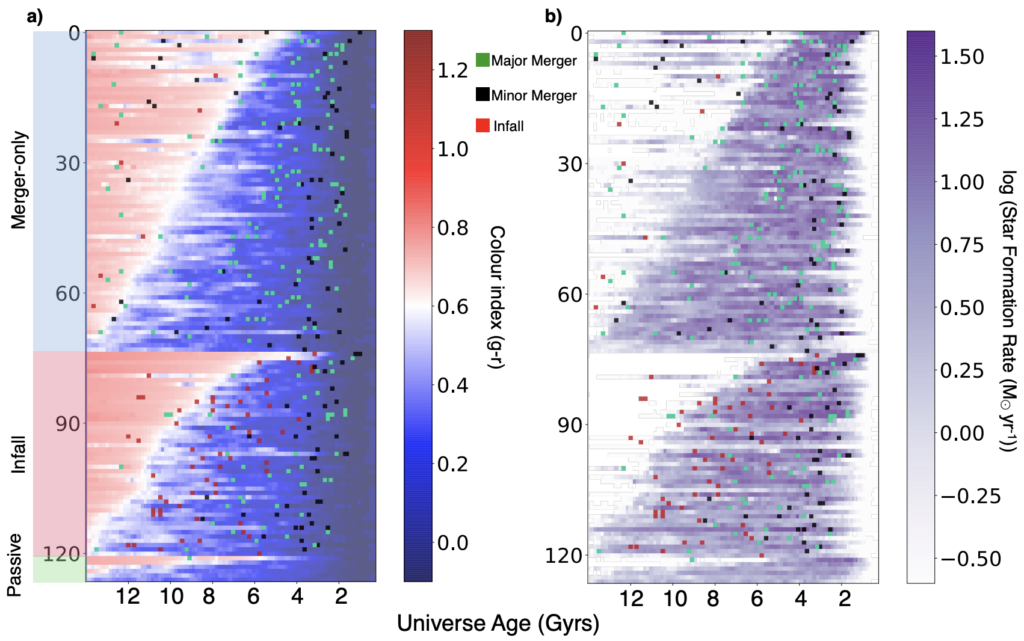
The Two Paths
As can be seen in Figure 1, the dominant pathways for S0 formation are mergers and infall events (stripping). Figure 2 illustrates these scenarios and gives the appropriate rates from the simulations. While stripping and mergers account for almost all of the S0 galaxies, some S0 galaxies can be formed passively or through the accretion of a small gas-rich disk onto an existing compact elliptical galaxy.
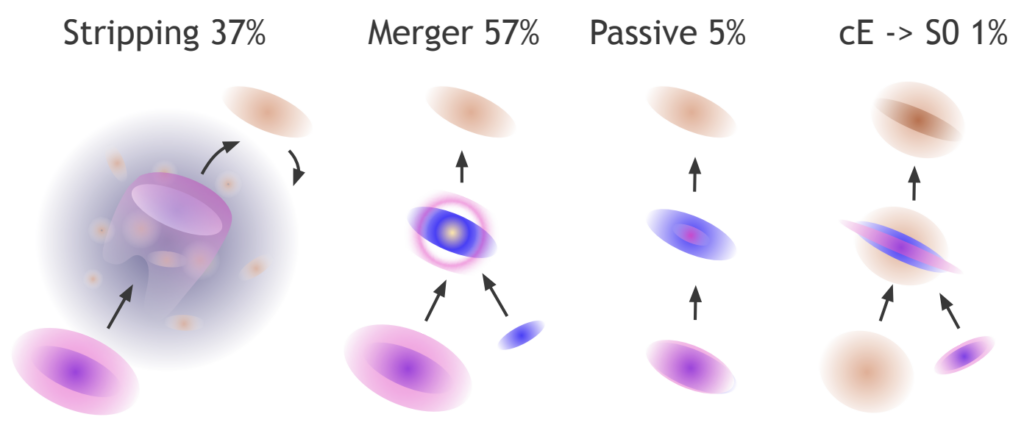
By showing that there are two highly viable pathways for S0 galaxy formation, today’s paper has helped to explain some of the diversity in observed S0 galaxy properties. While the authors note some trends in the properties associated with a particular formation pathway, they caution that using properties such as kinematics to try to distinguish between formation pathways can be difficult observationally. Nonetheless, it seems clear that the majority of S0 galaxies are formed when a spiral galaxy undergoes an event that removes the gas from the gas but allows the disk to remain. As we continue to understand the complexities of galaxy evolution, S0 galaxies will remain important towards understanding galaxy evolution as a whole.
Astrobite edited by Abygail Waggoner
Featured Image Credit: NASA

